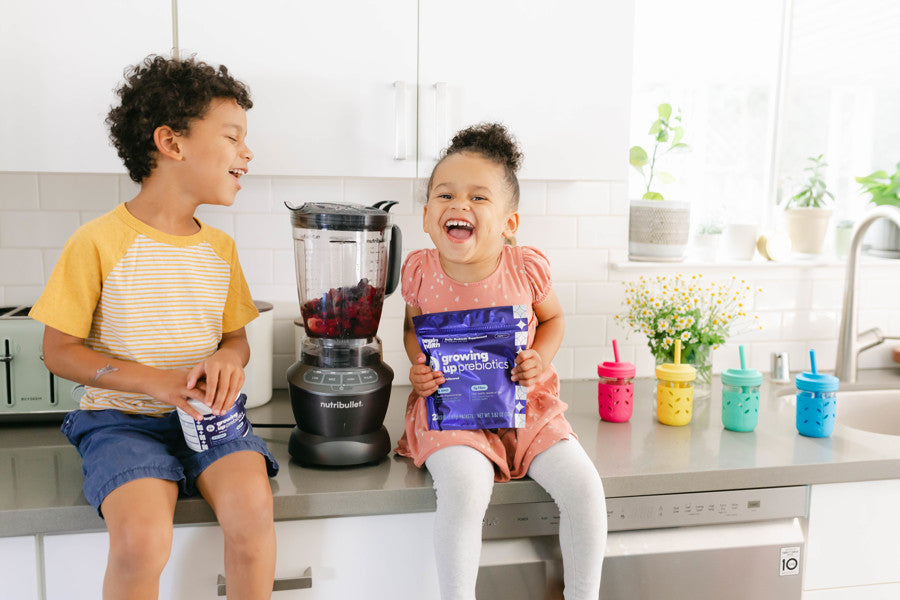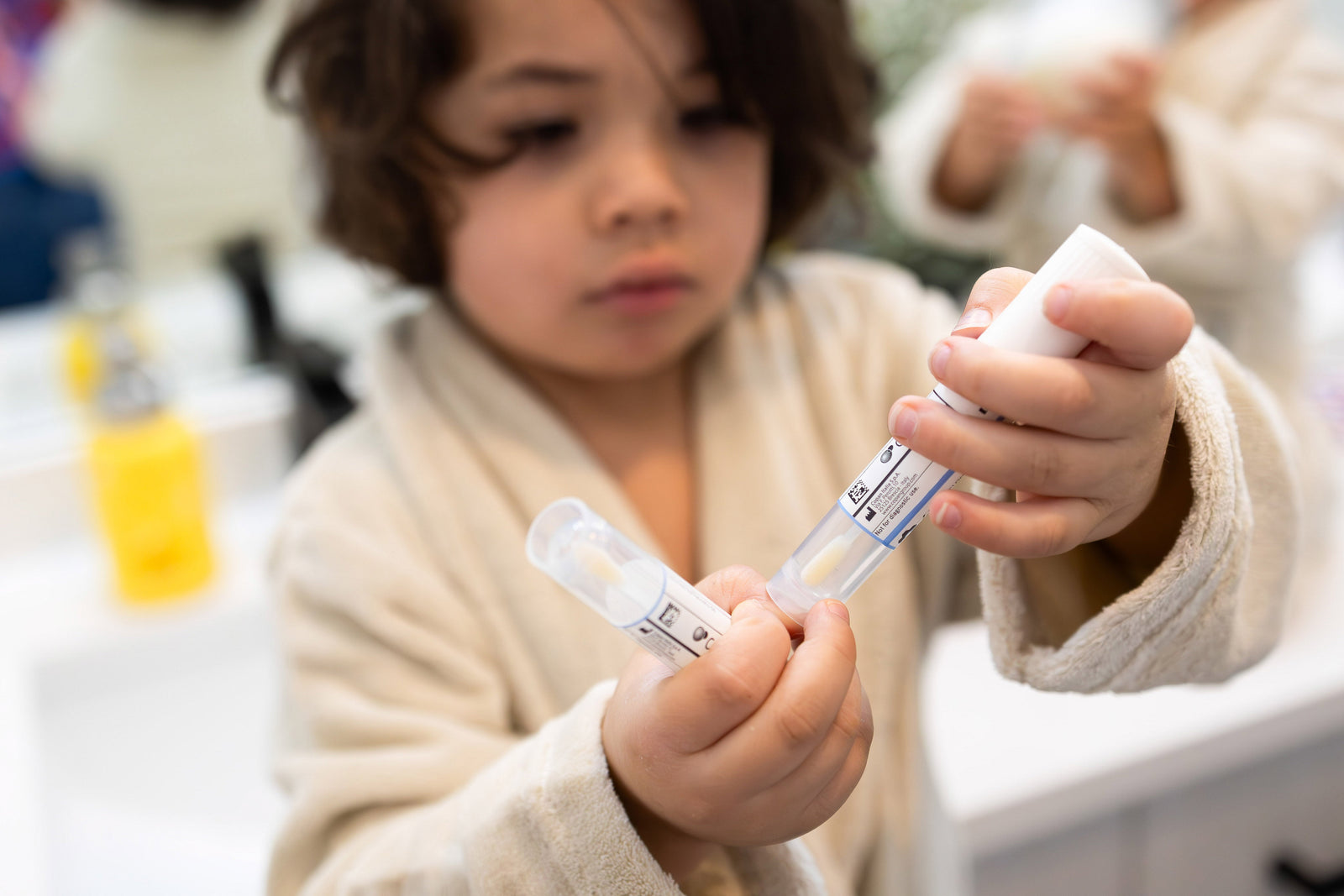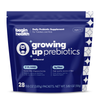Your Cart is Empty
Continue shoppingTop 5 Sources of Prebiotic Fiber for Kids to Support Constipation
Medically Reviewed by May Zhu, RDN | Published August 15, 2023
share this article

Incorporating sources of prebiotic fiber into your kid’s diet is one way to support a healthy gut and support constipation relief. Prebiotic fiber can be obtained from various food sources or through a kid’s prebiotic supplement such as our Growing Up Prebiotic. Prebiotics, like chicory root fiber, provide nourishment for good bacteria in our little one’s digestion to promote softer stool and a balanced microbiome [3,4].
In this article, we will explore the benefits from some of the top food sources of prebiotic fiber that you can easily incorporate into your kid’s daily meals and snacks. By incorporating these fiber sources, you'll nourish your little one’s growing microbiome and encourage regular bowel movements.
Apples
Apples are abundant in prebiotic fiber, particularly pectin, which serves as nourishment for beneficial bacteria and supports the growth of anti-inflammatory bacteria [1]. Encourage your little one to enjoy a crisp apple as a healthy snack or incorporate sliced apples into salads, snack-cuterie boards, or oatmeal.
Bananas
Bananas contain a type of fiber called inulin, which promotes the growth of friendly gut bacteria [2]. Incorporate ripe bananas into smoothies, slice them onto whole-grain toast, or freeze them for a refreshing and healthy snack.
Oats
Oats contain a unique type of fiber called beta-glucan, which acts as nourishment for beneficial gut bacteria [3]. Making oatmeal with yogurt or kefir can add some extra probiotic benefits, making it a balanced, gut nourishing meal. Top it with sliced fruits for extra nutrients and to add some natural sweetness.
Avocados
One medium avocado contains 9 grams of fiber from pectin, which is a source of prebiotic fiber [1]. Try adding avocados into sandwiches, dips, or even blending it into smoothies for a creamy, nutrient boost.
Growing Up Prebiotics
Do you have a picky eater? Our Growing Up Prebiotics might be a helpful solution. Each serving contains 3 grams of plant-based fiber from chicory root to support softer stools [5]. It also contains a 2’-FL HMO (Human Milk Oliggiosachiade), a prebiotic that feeds and nourishes the friendly gut bacteria in the gastrointestinal tract, where 70% of our immune system is located [6]. Contrary to its name, it’s not from human milk but does contain the same structure and benefits as the prebiotics in human breast milk. The best part? Our Growing Up Prebiotics are tasteless and textureless, so you can easily add it to your kid's favorite beverages to increase their fiber intake. Clinical research has shown that consistent use of our chicory root fiber can increase stool frequency, soften consistency, and reduce pain in just six weeks [5].
Daily reads to help your little ones lead happier and healthier lives.
Buy Now
Join the
Happy Gut Club
How much fiber is in these foods?
The following chart lists the percent of the recommended daily allowance for fiber that each serving of these foods provides.
This is based on the RDA of:
-
19 grams total at ages 1-3 years
-
25 grams total at ages 4-8 years
|
Food Source and Serving Size |
% RDA (Ages 1-3 years) |
% RDA (Ages 4-8 years) |
|---|---|---|
|
Apples, 1 medium |
23% |
17% |
|
Banana, 1 medium |
14% |
10% |
|
Oatmeal, 1 cup cooked |
21% |
16% |
|
Avocado, 1 medium |
26% |
20% |
|
Growing Up Prebiotics, 1 pack |
16% |
12% |
Summary
Nurturing your little one’s gut health is crucial, and incorporating prebiotic fiber into their diet is a natural and effective way to support a balanced microbiome. By including top sources of prebiotic fiber, such as apples, bananas, oats, avocado, and our Growing Up Prebiotic, you can provide your kiddos with a variety of delicious and nutritious options to enhance their gut health and overall well-being.

Author
May Zhu, RDN
Trending

Why Parents Are Choosing Prebiotics Over Stool Softeners for Kids
read now
Inc. Names Begin Health to Its 2025 List of the Fastest-Growing Private Companies in the Midwest
read now
Oxalates and Kids' Digestion: How High-Oxalate Foods Contribute to Constipation and Gut Discomfort
read now






